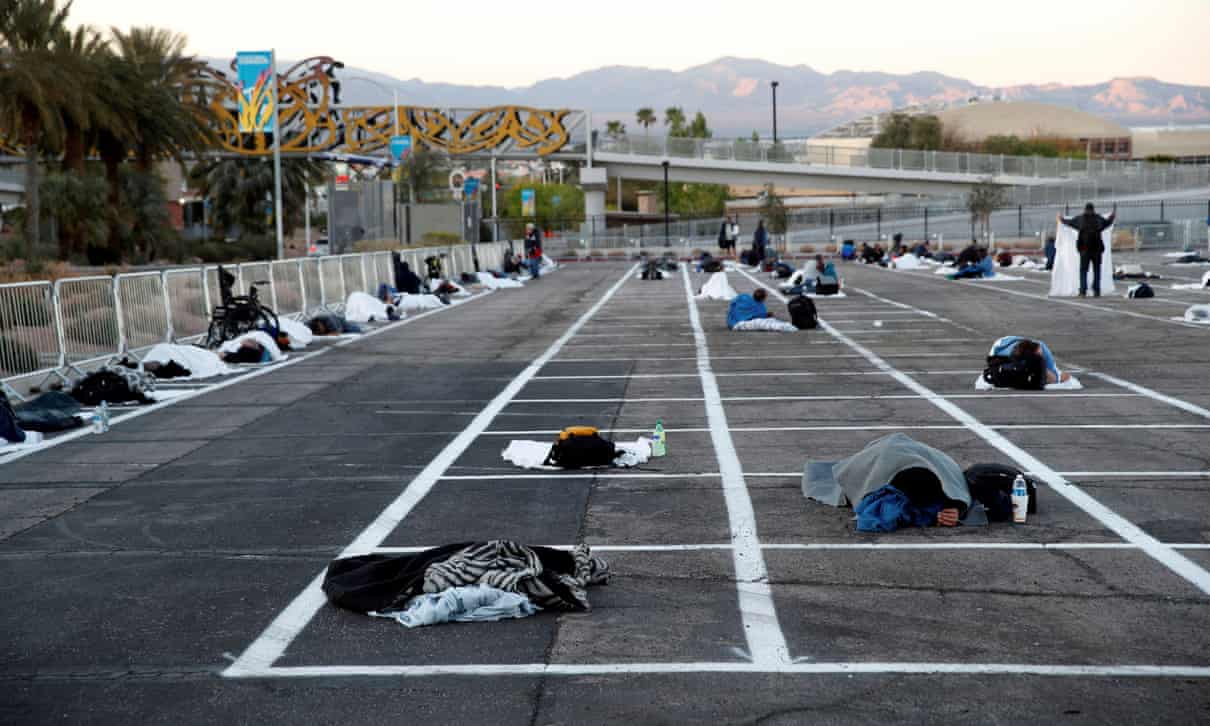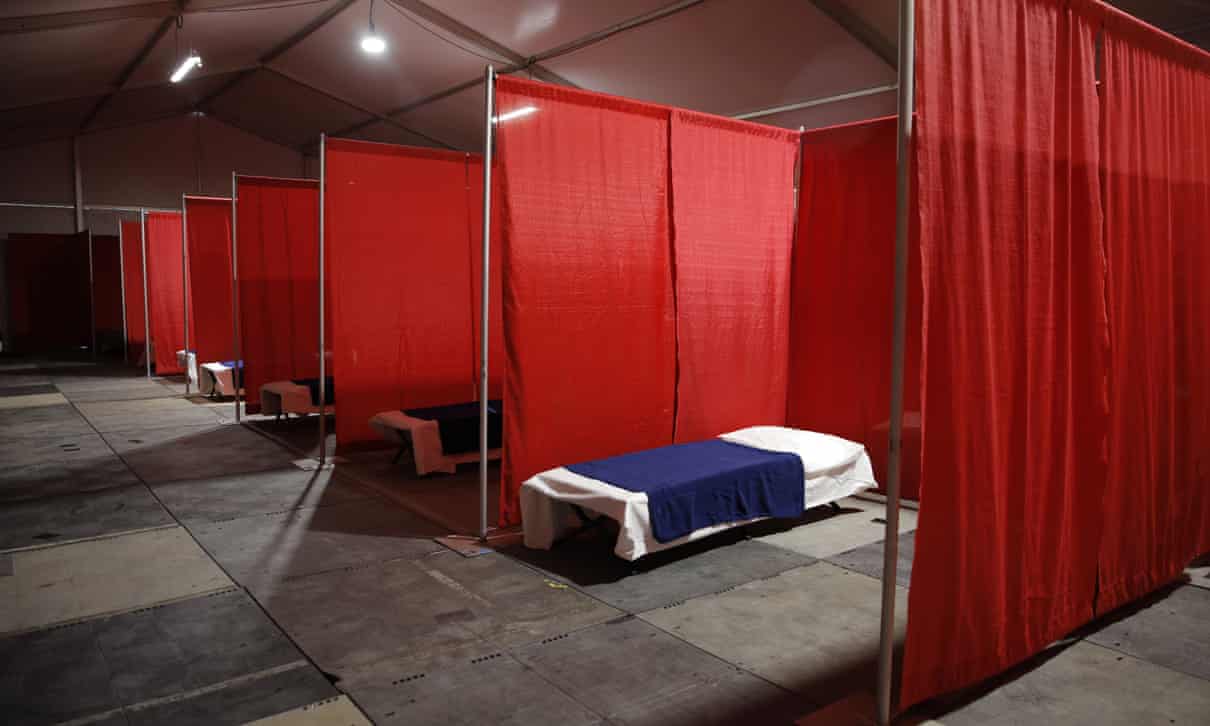HOMELESSNESS - NO SHELTER AT HOME
On my visits to the downtown and beach areas of the major cities of the USA since 1987, I have never ceased to be shocked at the large numbers of people sleeping in makeshift shelters or on the streets without any apparent public outcry.Since that time, people sleeping rough have increased everywhere else, but the USA remains "the home of homelessness". There have never been many rough sleepers in Australia, typically 2,600 nationally on a given night, and 4,200 in the United Kingdom. In the USA there are 553,000 rough sleepers on a typical night, according to HUD.
Just before the COVID outbreak, I rang my wife in downtown San Francisco, around midnight Pacific Time. It sounded like a loud TV was blaring in the room.
“What’s all the noise?”
“It’s all the homeless outside on the street.
I can’t sleep because of the racket all night. A lot of them are just ordinary grandparents
and families with children”.
And in a few weeks they were all gone and
it was quiet on the street.
Homelessness and COVID-19
There
was immediate concern everywhere about rough sleepers as soon as the COVID-19
lockdown was announced. They congregate for company, they do not have easy
access to water for hand washing, and by definition, they cannot ‘shelter at
home’. The population is
extremely at risk because many have vulnerable health situations already. The shelters for the
homeless can be prime superspread zones, with beds in an open area or
bunks in a shared room. They have been described as a “ticking time
bomb”.
A hundred people at San Francisco’s largest homeless shelter were
declared positive for the virus by 15 April. The city leases a number of hotels
for homeless people and it was alleged people from other cities were moving thereto take advantage.
As a stopgap, portable
toilets and hand-washing stations have been installed around
encampment centres, and medical professionals have begun to make visits to
educate these communities on preventing COVID-19.
In Nashville TN, homeless have been taking shelter at the fairgrounds.
Homeless advocates have been concerned they are not isolated in this group
setting. Half a dozen showing symptoms were moved to isolation.
The state of California is on its way to acquire 15,000 hotel rooms total to house people as part of his state-wide initiative “Project Roomkey,” which was established so that the Federal Emergency Management Agency (FEMA) would pay 75 percent of the housing fees to shelter the homeless. Other cities are now following suit. Hotels in New York City are on track to house 6,000 people.
Las Vegas
Homelessness is a continuing crisis in southern
Nevada, with at least 6,500 people camped on streets or in storm drains at any
given time. In November 2019, Las Vegas council
approved a controversial law criminalising homelessness, making sitting,
resting or “lodging” on sidewalks a misdemeanour punishable with up to six
months in jail or fines of up to $1,000 in most neighbourhoods.
After “shelter at home” was instituted, Catholic Charities closed and the city’s other shelter,
Courtyard Homeless Resource Center, was nearly filled to capacity. the city and county worked to open a
temporary shelter in the parking lot at the Cashman Convention
Center. The inside of the Center could not be used because it was reserved for overflow
hospital space. Initially they placed the homeless in quarantine in the marked
rectangles of parking bays. They were supposed to have a carpet square underneath
them, but these soon ran out.
When pictures were shown around the world of the homeless in marked-out squares with empty hotels behind them, outraged critics
including Pope Francis asked why they were not placed in some of the 150,000 Las
Vegas hotel rooms left vacant by the emergency. “How
about public-private cooperation to temporarily house them there? And fund
permanent housing!”
On Twitter, the city said that Clark county, where
Las Vegas is based, “did attempt to work with hotel partners but "deals were not
able to be ironed out. None of those hotels are open. There’s no staffing
at any of those hotels. The city doesn’t own any hotels,” Jace Radke, a senior
public information officer for Las Vegas, said.
The city continued with their plans
to create a tent isolation complex. It has rows of beds, in 10
by 10 squares, with short, cloth partitions between them. People who have been
diagnosed with coronavirus, and those who only need to quarantine, are put in
separate parts of the complex.
The “isolation complex”, a first of its kind facility in the nation, and similar to South Korea’s,
is only accessible to those with a medical referral, either for being diagnosed
with coronavirus, for having symptoms, or for having been exposed to someone
with coronavirus. “Homeless people cannot just walk up and get a bed: they are
being transported to the complex in an ambulance.”
Discussion
Homelessness will necessarily increase as the pandemic continues. Jennifer Friedenbach, director of San Francisco’s Coalition on Homelessness, said, “we need billions of dollars poured into rent assistance, rent vouchers, construction of new housing, all of the different policy interventions to create housing specifically for people who are homeless and are extremely low income, so that we actually have that housing available to them”.
Even in the USA, with fifteen times the density of rough-sleeping homelessness as anywhere else, it is evident that that the homelessness problem can be easily addressed with available resources if the will is there.
Accommodating these people is a mere drop in the bucket compared with the vast sums that
are being outlaid on the COVID crisis.
It has taken a pandemic for officials to finally confront the issues of homelessness — and allocate the money and resources for solutions — and even then, many cities delayed action until there were finally confirmed outbreaks within shelters. One thing we know about COVID-19 is, if you wait for cases – then you are too late.
It will be hard for governments to "put this back in its box" and justify their prior inaction on homelessness once this is all over.
<Return to Index>
It has taken a pandemic for officials to finally confront the issues of homelessness — and allocate the money and resources for solutions — and even then, many cities delayed action until there were finally confirmed outbreaks within shelters. One thing we know about COVID-19 is, if you wait for cases – then you are too late.
It will be hard for governments to "put this back in its box" and justify their prior inaction on homelessness once this is all over.
<Return to Index>
:format(webp)/cdn.vox-cdn.com/uploads/chorus_image/image/66683216/GettyImages_1219664532.0.jpg)


Comments
Post a Comment